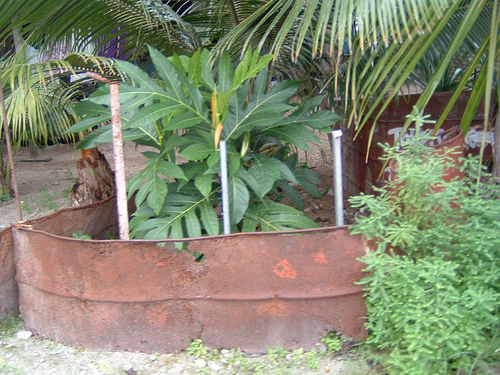- Beer with shrooms. Well, not quite, but one can hope.
- No more corn detasseling? Say it ain’t so.
- “Oman to Plant 100,000 Coconut Trees in Dhofar.” That’s in the south of the country, a fascinating area. And one asks, as ever: What varieties, and what’s going to happen to the local material?
- Be like the bamboo, man.
- From DAD-Net, news of a mini-conference on the camel. And an article on same.
- The struggle for forest grazing rights in India.
- Dump blueberries, eat local berries, Brits told. Pavlovsk still in trouble.
Nibbles: Protected area management, Yam domestication, Ottoman cooking, Measuring rice drought tolerance, Proteomics, Lupinus, Areca, Jethobudho, Nutrition megaprogramme, Soil bacteria
- Concentrating management practices on conserving a particular plant species may have bad consequences for other bits of biodiversity. Lessons for crops wild relatives?
- Benin’s farmers ennoble wild yams.
- A Lebanese lunch is an educational experience. Right.
- Paddyomics video. Nothing to do with the Irish. It’s about how IRRI is automating, er, everything about its phenotyping.
- Tamarind’s environmental niche is, in fact, er, niches?
- Different wheat genomes generate distinct protein profiles.
- Phylogenetic relationships of a new Mediterranean lupin.
- Betel nut chewing endangers coral. Kinda. Traditional and all that, but an unpleasant habit nonetheless.
- Our friend Bhuwon and others tell the story of the participatory improvement and formal release of Jethobudho rice landrace in Nepal.
- CGIAR elicits comment on the Agriculture for Improved Nutrition and Health megaprogramme. Until August 1.
- Bacterial diversity boosts maize yields.
Ripe breadfruit blown from a tree in a storm
The final paragraph of The Economist’s obituary of Mau Piailug, Pacific navigator and culture hero:
In 2007 the people of Hawaii gave him a present of a double-hulled canoe, the Alingano Maisu. Maisu means “ripe breadfruit blown from a tree in a storm”, which anyone may eat. The breadfruit was Mau’s favourite tree anyway: tall and light, with a twisty grain excellent for boat-building, sticky latex for caulking, and big starchy fruit which, fermented, made the ideal food for an ocean voyage. But maisu also referred to easy, communal sharing of something good: like the knowledge of how to sail for weeks out on the Pacific, without maps, going by the stars.
And like plant genetic resources, including breadfruit, perhaps. Anyway, a good word to know, maisu. Pacific people really take care of their breadfruit trees, incidentally. I took this photo in Kiribati a few years back.

Nibbles: Cassava virus, Peru’s Potato Park, Marula, Taimen, Meetings, Cornish fruits and veg
- New cassava varieties saving Zanzibar. Good to hear, though as ever one worries about what’s happened to the local landraces.
- Alder’s photos of the Potato Park. Do follow her travels around South America in search of agrobiodiversity.
- Namibia looks for other marula products.
- Saving the taimen in Mongolia. That would be a fish. A mighty fish.
- Interesting Indian symposia: wild fruits; “lifestyle floriculture.” Oh, to have more information.
- “Gariguette strawberries are an old variety and are non-licensed.” Crazy, eh?
Nibbles: Oil palm, Breadfruit, Barcoding, Guyana genebank, Wheat and heat
- Palmhugger, an oilpalm advocacy group, likens Greenpeace to Goebbels. Who are they really? CIFOR is linking to them on Facebook, so they’re probably kosher, right?
- Nice story on breadfruit in Hawaii.
- More barcoding stuff.
- Reader: We must have a bank of seeds of our fruits and vegetables. Minister of Agriculture: We do!
- Australian wheat boffins: “Adaptation strategies need to be considered now to prevent substantial yield losses in wheat from increasing future heat stress.”